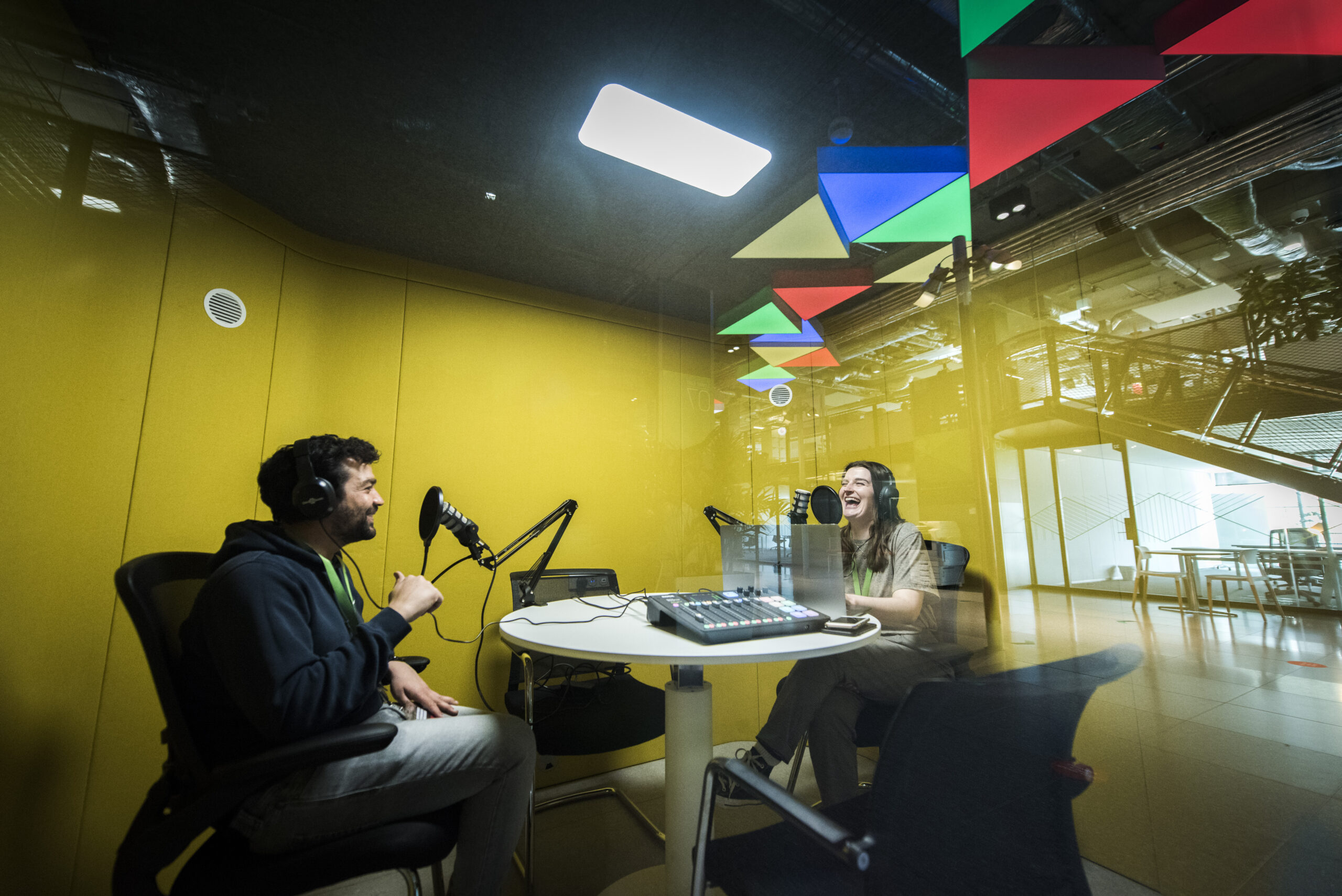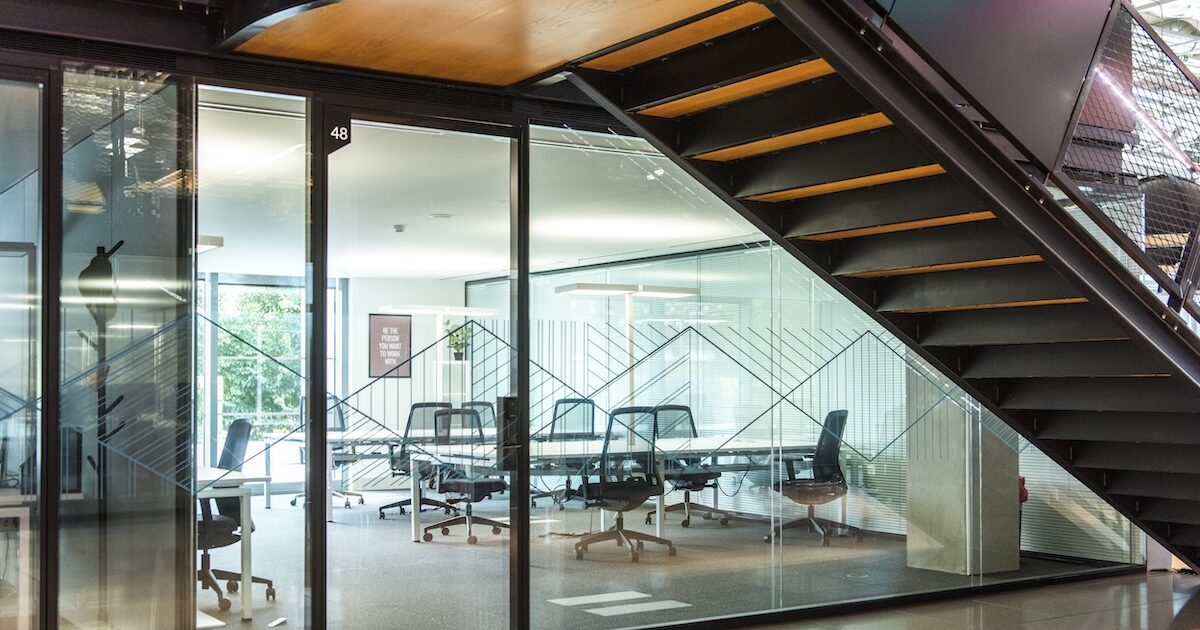The big idea: be useful and provide solutions
While there are lots of successful podcasts that make you feel like you’re eavesdropping on a really interesting conversation, this style is actually pretty hard to get right – especially for podcasts by brands.
Think about what your audience needs and how you can solve their challenges or answer their questions. Make it worth their time by offering a solution. For example, The Pitch is a podcast about the world of startups that uses the stories of entrepreneurs to answer some of the most common questions that baffle anyone who’s ever had an idea. It’s popular because it offers genuinely useful information.
Your podcast should also have an angle and theme that’s different. If you want to create a podcast on startup life, what’s your unique take on it and how can you do something different to what’s out there?
Choose a format
All successful podcasts have a format. Will you always have one host and one interviewee having a conversation? Will you take more of a scripted non-fiction approach that relies on great storytelling, like Serial? Will you recap and analyse what’s happening in your industry that week?
It’s a good idea to retune your ear and examine the formats of other shows before deciding on your own. And you don’t need to limit yourself to podcasts – radio and television formats are often easily adapted to the podcast medium.
Write a script
Even if your podcast is designed to be a fun and frothy freestyle chat among friends, you need a script. Those celebrity chats on the Graham Norton Show may look entirely natural but it’s anchored by some level of scripting.
These are the standard components to consider:
Your intro
This is the elevator pitch for your podcast that should sum up what the podcast is about, who it’s for and who’s created the podcast. Your host should then introduce themselves, before explaining what the episode will cover.
Stings
Sometimes even life’s most exciting chats end with “so, um… yeah”. A sting is a good way of making sure any conversational dead-ends are edited out. These very short bursts of music break up your discussion and/or topics and breezily move things along.
Reset
Traditionally a broadcasting technique, a reset reminds listeners what they’re listening to and what’s still to come. It’s often inserted around the halfway point and can help keep people interested by teasing what’s to come.
How long is your show?
If you’re producing a narrative podcast, the bulk of your show might be scripted. By timing yourself reading your script you’ll be able to gauge the length of your episode and adjust your script accordingly.
But if your show is largely freestyle, it can be harder to estimate a running time. This is where scripting can be especially useful. For example, if your presenter is hosting a panel discussion then a loose script can remind them of the key talking points they need to cover. Have the script handy and keep an eye on the clock when you’re recording.
It’s a good idea to consider the habits of your target audience when deciding how long your podcast will be. If they’re likely to be listening in a hurry during their commute, you may want to aim for the average length of a commute (30 minutes). Whatever you decide, try to stick to it so listeners know what to expect.
Outro
You’ll want to sum up the discussion, include any calls to action and potentially tease the next episode.
Choose your music
Unless you hold the rights to a piece of music, you can’t use it in your podcast. There are royalty-free alternatives that offer rights to music for a one-off fee. These are often limited rights, which means the music can be used for specific purposes (which will be set out in the license agreement).
The downside of using royalty-free music is that you don’t own the rights to it and other brands might pick the same track.
Another option is to commission your own bespoke suite of music. The cost is usually several hundred pounds but it can be a wise investment if you want a sound that’s unique to your brand.
A suite of music usually includes these components:
Main theme
There will often be a couple of variations on the main theme (sometimes called a menu bed) that can run for several minutes. After an initial introduction, the music often repeats itself. This allows a voiceover to be added later.
Menu tag
This is added at the end of the voiceover to outro the theme music at the required time.
Stings
Several stings are usually included with varying lengths.
Create your marketing plan
You should plan how you’ll attract listeners before you hit record. Tactics include:
- Encouraging guests to share your podcast – it helps if you can start with a bang by getting someone influential on your show with a big online presence
- Planning for PR – if your guest says something that could become newsworthy, let the media know about it
- Create a visual style for your podcast and create artwork in advance. This can include cover art (what people will see in podcast platforms) as well as templates that will allow you to feature audio highlights on social media (Audiogram is a useful tool for this).
- Your cover art should be on-brand and tell people what your podcast is about in a glance – it’s essentially your shop front that will catch people’s eyes when they’re browsing on podcast platforms. Ideally the dimensions will be 3000 x 3000 pixels, and you’ll want to save it as a JPEG or PNG with a resolution of 72 dpi.
- Create a range of assets that you can use on social media to drip feed people snippets of audio to encourage them to listen to the full thing
- Look for opportunities to promote your podcast on other podcasts with a trailer (and think about whether you’d be happy to do the same)
- Think about frequency: dropping three episodes at the start or having a season where you release an episode each week can help you build a following fast. It can be harder to create loyal fans if you’re releasing episodes sporadically or only once every few months. Let them binge on your audio.
- Publish your podcast on YouTube. Recording platforms allow you to record both audio and video.
Hit record
Once your plan is in place, here’s what to consider:
Find the right location and equipment
Although it’s easy to record a podcast on your phone from just about anywhere, it’s worth investing in high-quality recording equipment and finding a professional environment with good soundproofing. You want the room to have plenty of soft furnishings so there’s minimal echo and be sure to listen out for the hum of air conditioners or refrigerators.
When selecting your audio equipment, there are some basics to consider: a microphone, a pop shield (this is the circular mesh that attaches to the front of the microphone and prevents plosives from interfering with your audio) and something to record onto, like a Micro SD card device. You can also record directly to a computer.
Plexal’s Rodecaster Pro combines all of these into a professional deck that’s easy to master right out of the box.
Test your microphones
It’s always a good idea to check that your equipment is working properly. Ask all your guests a question before you start the interview to test the sound. Asking them a question rather than just asking them to speak will make it more likely that they’ll use their natural voice, which is important as you’ll want to adjust your equipment so that it records all voices at the same volume – regardless of how loudly or softly everyone speaks.
In general, your microphone should be around two to four inches away from your mouth. But you and your guests may have to figure out what works best with the mic you’re using as this can vary.
Speak like a pro
We tend to speak quickly when we’re having conversations with friends but when you’re reading a script, slow and steady is best. Listen to a newsreader on radio or TV and look out for:
- speed: presenters tend to speak at a slower pace
- rhythm: inflections help keep longer sentences from sounding monotone
- language: scripts are written for speech so avoid things like parentheses or describing things as “the latter” or “the former”
Identify your guests
This is especially important for shows that involve several parts recorded at different times. It can be surprisingly easy to forget who’s speaking in which audio file. Each time you hit the record button, ask your guest to state their full name.
If you’re using a recording platform like Zencastr, things this isn’t so much of an issue. It will save a recording of each individual speaker separately as a WAV file and each file will be saved with the speaker’s name.
Monitor your sound
You should monitor the sound that you’re recording with a good set of headphones. The headphones will pick up background noise that your naked ear might miss.
And don’t forget that anything involving wires and batteries can fail at any time. Be prepared with a good stash of spare batteries and, if possible, spare cables.
Don’t worry if you record more than you need
You can always select the best bits in the editing room.
Start editing
In the editing room, you’ll need to segment your podcast, trim it to your ideal length and add your music, stings and any pre-recorded intros, outros or trailers.
All you really need to edit a basic podcast is multi-channel editing software. This means that several audio files may be moved, snipped and layered on top of each other. Garageband (a standard inclusion on Apple computers) is relatively easy to master, and non-professional editors also find Audacity easy to get to grips with. But if you want your podcast to sound really polished, you should consider using professional sound editing software like Adobe Audition.
There are a few rules that any editor should abide by, such as snipping out every instance of someone saying “umm” and raising or lowering the volume on all your audio files so everything is at about the same the level. But if you’ve never edited audio or video before then it might be better to hire an editor.
Distribute your show
It’s important that you get your podcast listed on all the major podcast directories, including Apple Podcasts, Spotify, Google Podcast and Stitcher.
Your episodes won’t necessarily be hosted by these platforms, they’ll actually be downloaded via an RSS feed from a hosting site. Some podcast apps like Acast offer a full-service solution that makes it easier to upload your podcast and distribute it to all the leading platforms. But this can be a laborious task, so you may wish to consider hiring a producer.


